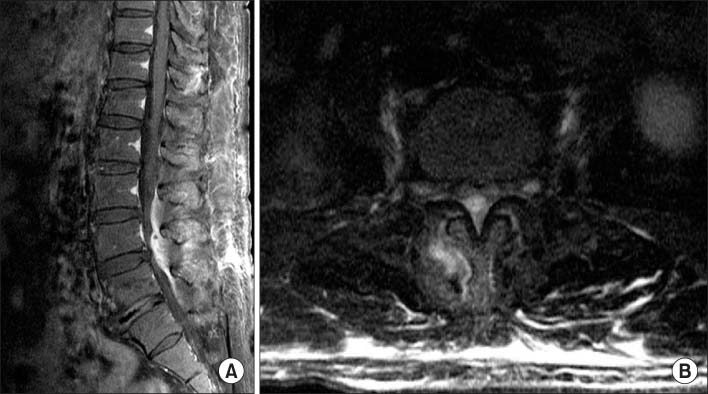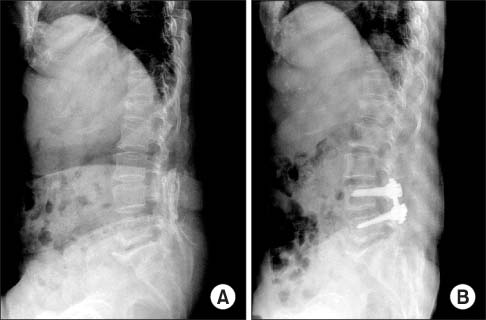J Korean Orthop Assoc.
2014 Oct;49(5):381-384. 10.4055/jkoa.2014.49.5.381.
Epidural Abscess Following Epidural Catheterization for Painless Mobilization after Total Knee Arthroplasty
- Affiliations
-
- 1Department of Orthopedic Surgery, Research Institute of Clinical Medicine, Chonbuk National University Medical School, Jeonju, Korea. wsi1205@naver.com
- KMID: 2185174
- DOI: http://doi.org/10.4055/jkoa.2014.49.5.381
Abstract
- Epidural analgesia is one of the effective methods for pain management after total knee arthroplasty. Although epidural analgesia has been reported to have very low epidural abscess rates, infection could be serious and life-threatening, if there is no early diagnosis and treatment. We report on a patient who developed an epidural abscess following epidural catheterization after total knee arthroplasty.
Keyword
MeSH Terms
Figure
Reference
-
1. Bozkurt M, Yilmazlar A, Bilgen OF. Comparing the effects of analgesia techniques with controlled intravenous and epidural on postoperative pain and knee rehabilitation after total knee arthroplasty. Eklem Hastalik Cerrahisi. 2009; 20:64–70.2. Garcia JB, Barbosa Neto JO, Vasconcelos JW, Ferro LS, Silva RC. Analgesic efficacy of the intra-articular administration of high doses of morphine in patients undergoing total knee arthroplasty. Rev Bras Anestesiol. 2010; 60:1–12.
Article3. Dunn LT, Javed A, Findlay G, Green AD. Iatrogenic spinal infection following epidural anaesthesia: case report. Eur Spine J. 1996; 5:418–420.
Article4. Reynolds PC, Hahn MB. Early diagnosis of a spinal epidural abscess. Reg Anesth. 1991; 16:57–58.5. Ritter MA, Stringer EA. Predictive range of motion after total knee replacement. Clin Orthop Relat Res. 1979; 143:115–119.
Article6. Akeson WH, Amiel D, Abel MF, Garfin SR, Woo SL. Effects of immobilization on joints. Clin Orthop Relat Res. 1987; 219:28–37.
Article7. Farag E, Dilger J, Brooks P, Tetzlaff JE. Epidural analgesia improves early rehabilitation after total knee replacement. J Clin Anesth. 2005; 17:281–285.
Article8. Kindler CH, Seeberger MD, Staender SE. Epidural abscess complicating epidural anesthesia and analgesia. An analysis of the literature. Acta Anaesthesiol Scand. 1998; 42:614–620.
Article9. Kruger M, Harries K, Dumont S. Osteomyelitis following epidural analgesia in an immunocompromised patient. Anaesthesia. 1998; 53:314–315.10. Nordberg G, Mark H. Epidural abscess after epidural analgesia treated successfully with antibiotics. Acta Anaesthesiol Scand. 1998; 42:727–731.
Article
- Full Text Links
- Actions
-
Cited
- CITED
-
- Close
- Share
- Similar articles
-
- Epidural Abscess Following Continuous Epidural Catheterization
- Epidural Abscess following Longterm Epidural Catheterization
- Epidural Abscess Following Continuous Epidural Catheterization for the Management of Chronic Cancer Pain: A case report
- Spinal Epidural and Subdural Abscess following Epidural Catheterization: A case report
- Chronic Spinal Epidural Abscess after Epidural Analgesia: Case Report



